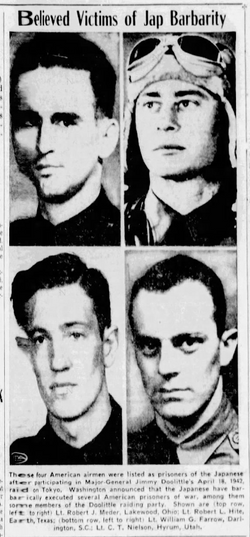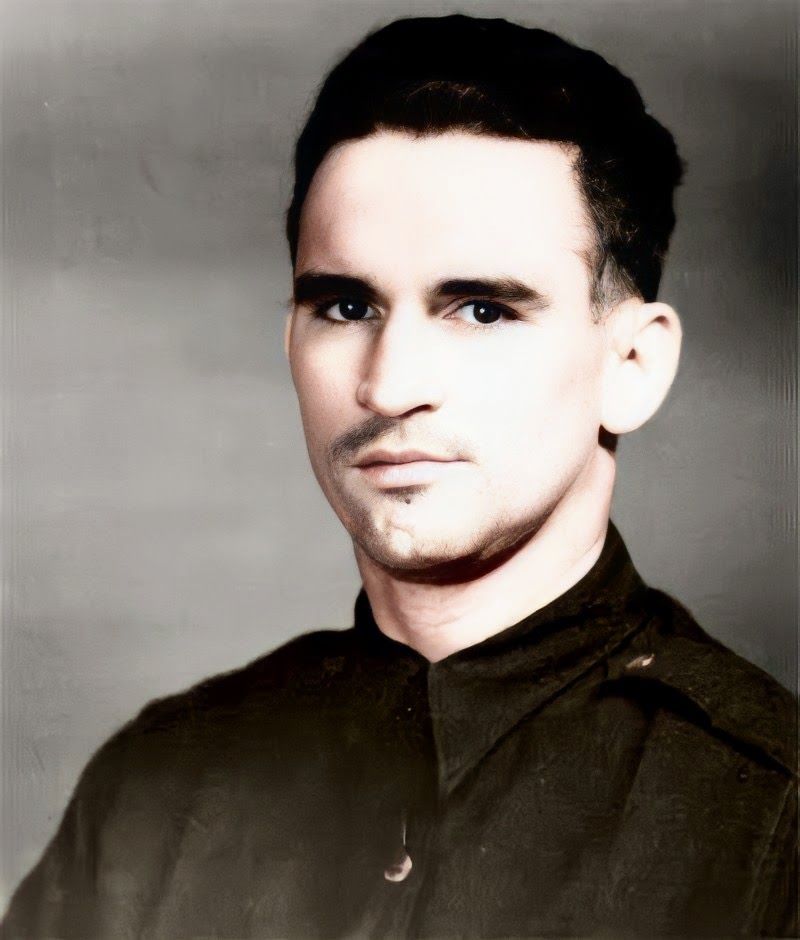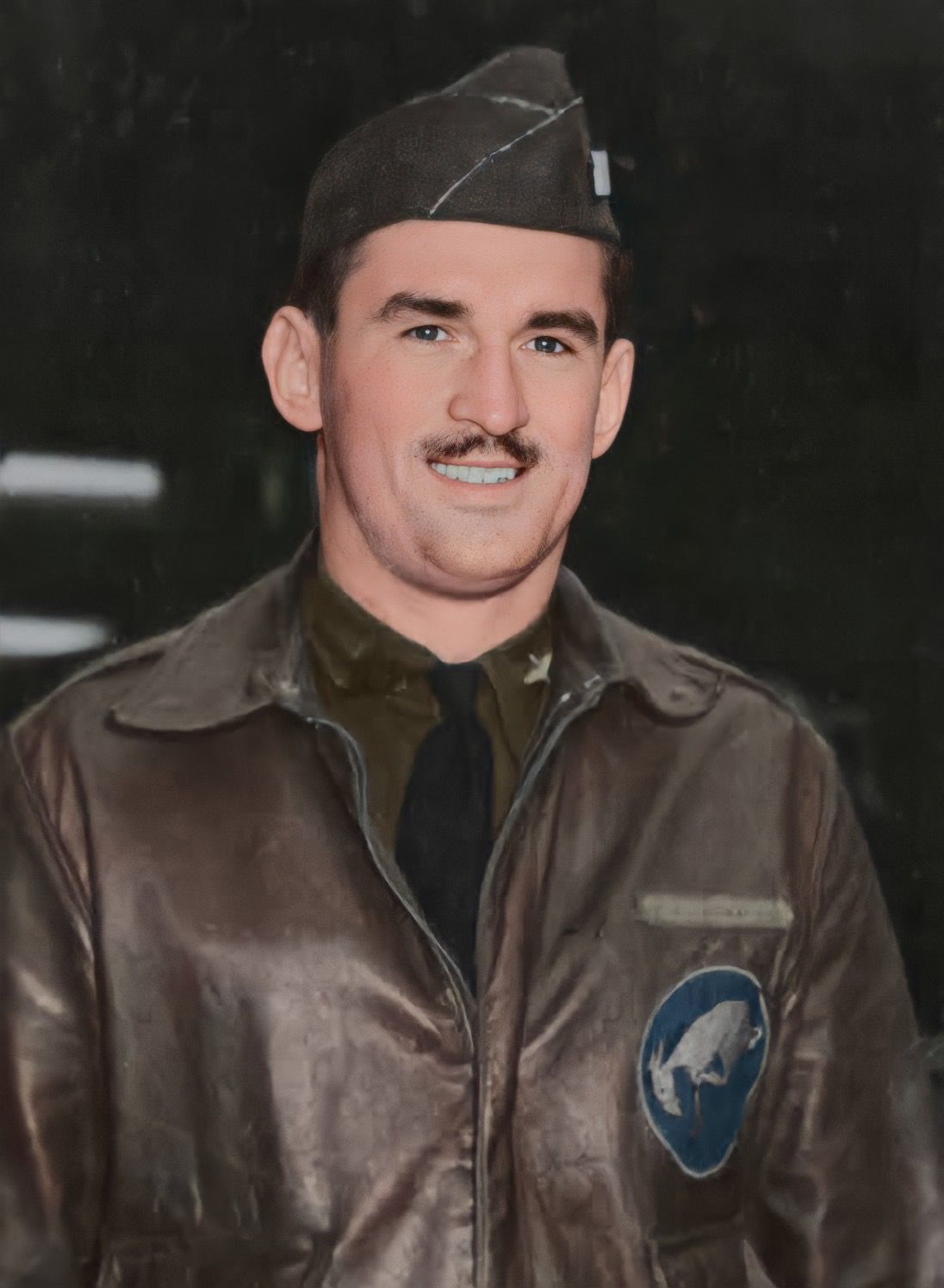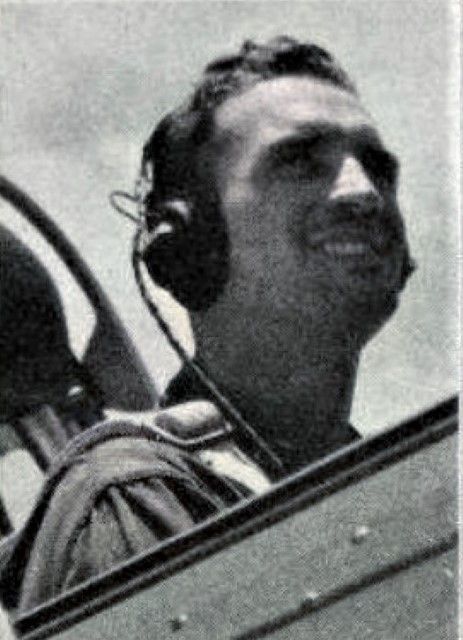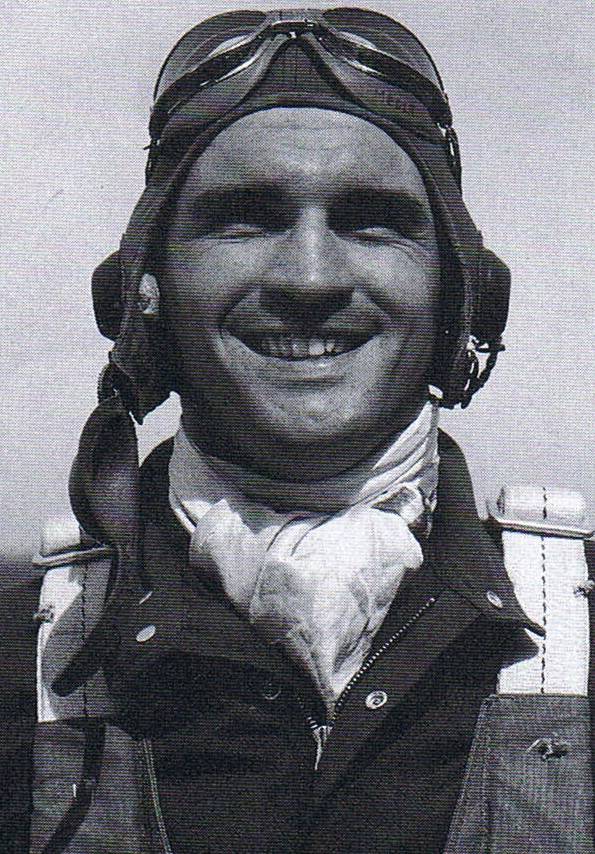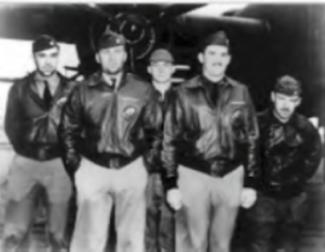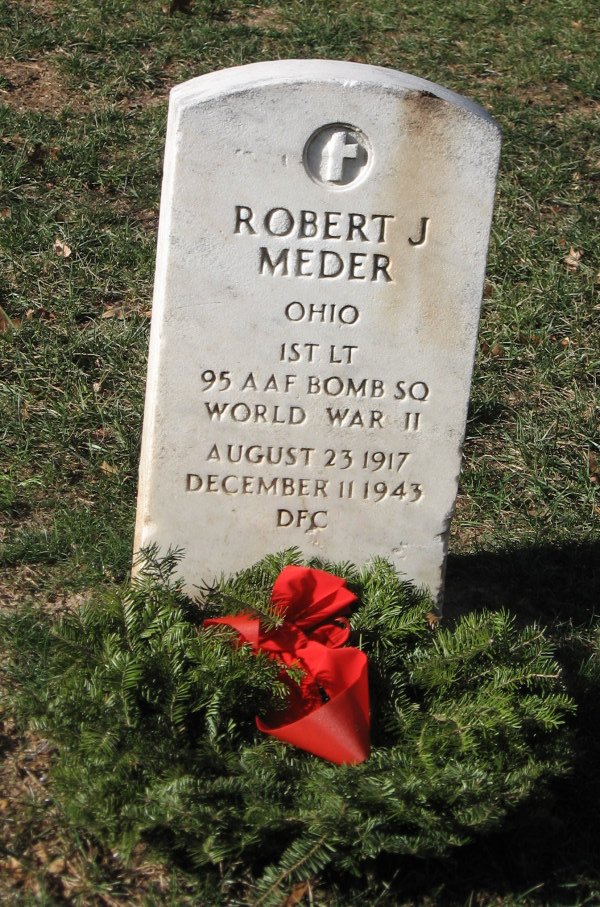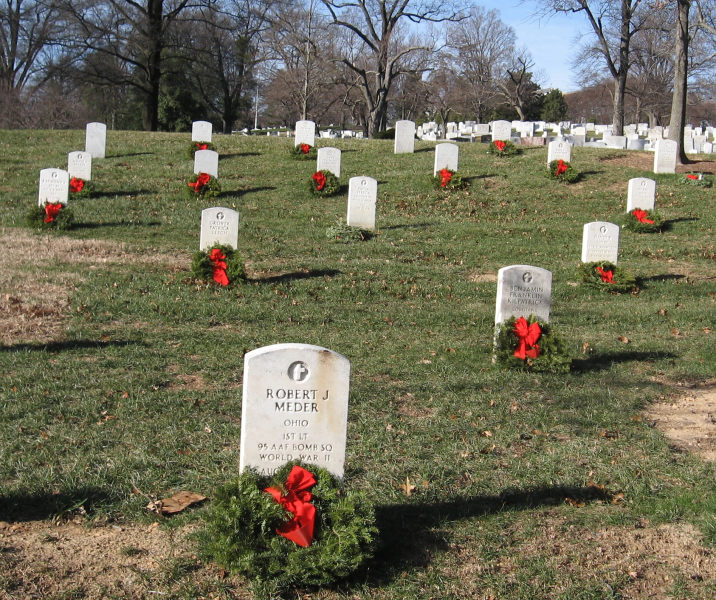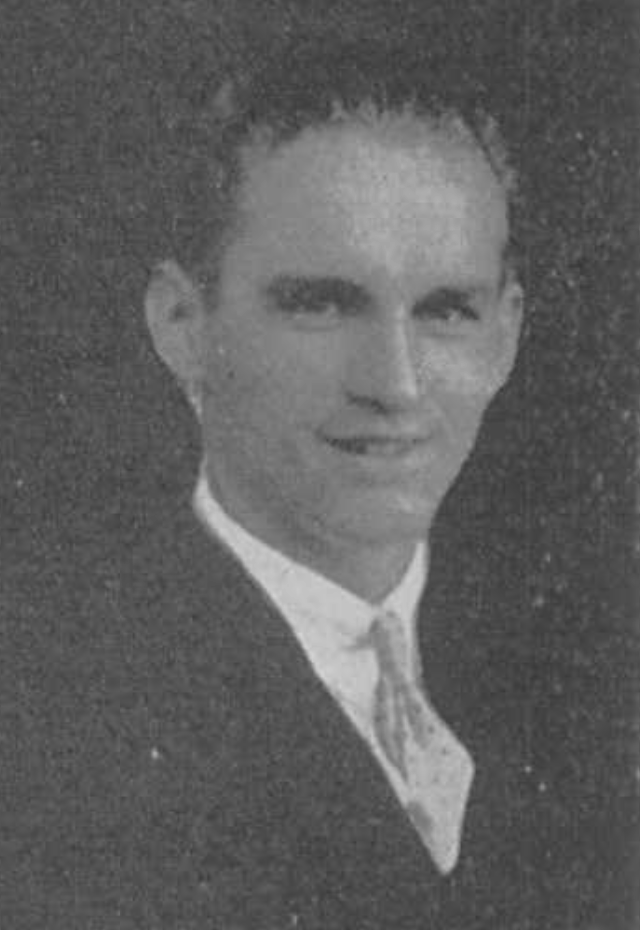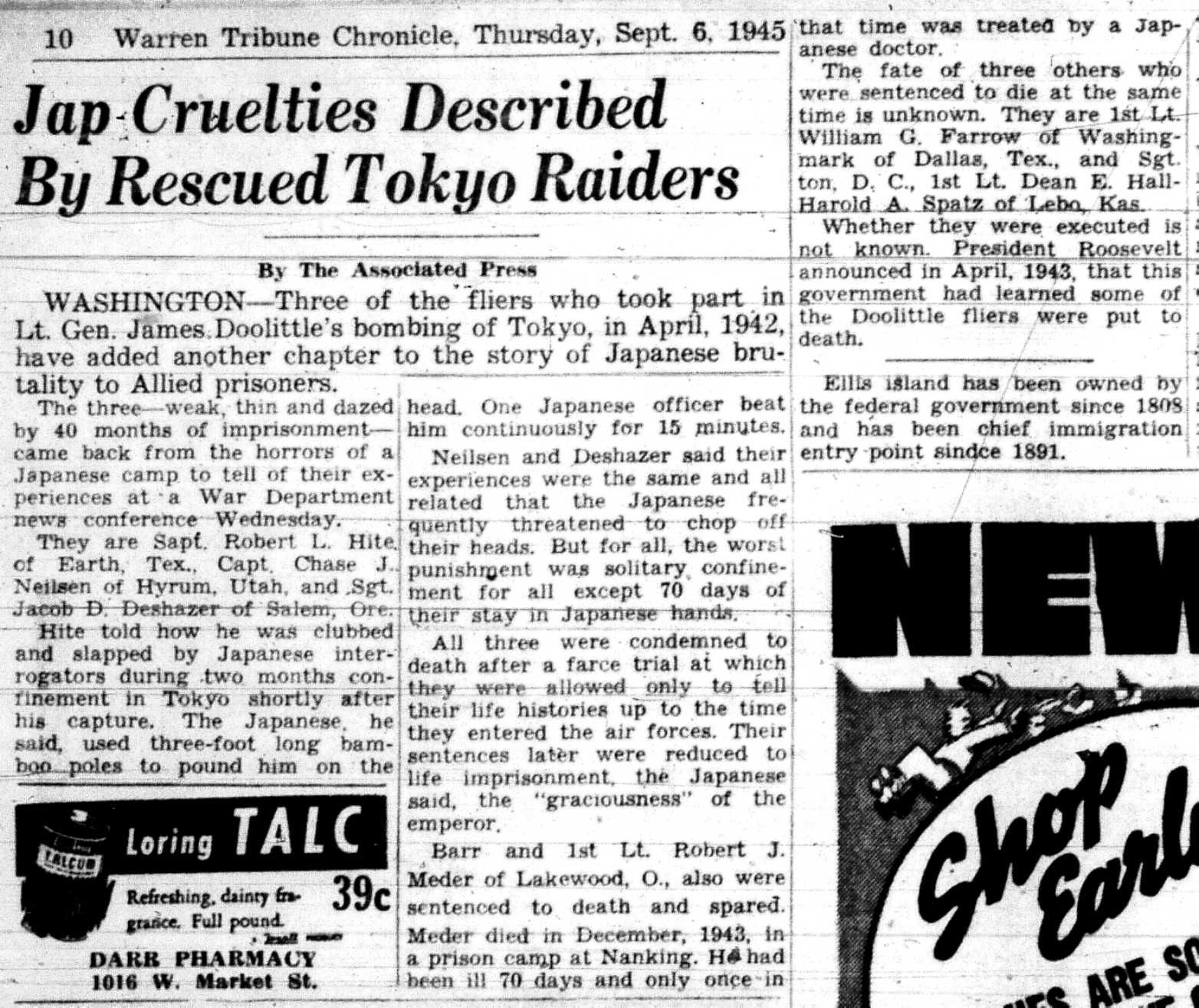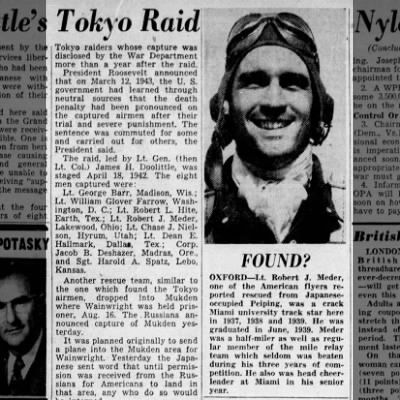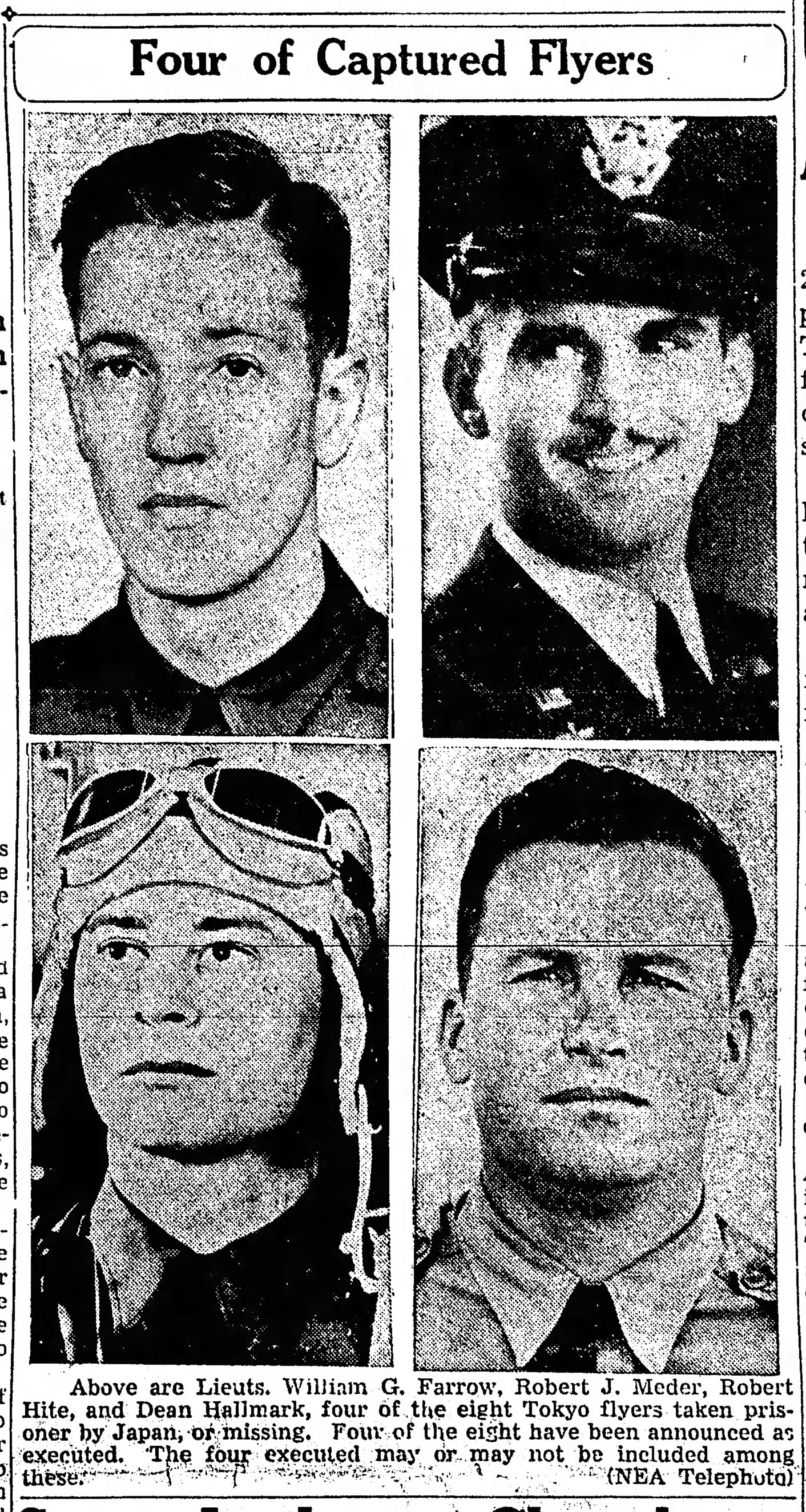He joined the Army Air Corps in 1940 as war loomed for the US. On April 18, 1942, after months of bad news on the war in the Pacific, the US public was stunned to learn that 16 American B-25 bombers, led by Lt. Colonel Jimmy Doolittle, had successfully bombed Tokyo and a number of other Japanese cities. The B-25s had taken off from the aircraft carrier, USS Hornet, and flown over Japan to bomb strategic targets. Following the bombing made famous by the 1944 book and film, “Thirty Seconds over Tokyo” the raiders flew on to China rather than return to the USS Hornet. Short of fuel, most of the planes crashed far short of the friendly Chinese airfields they were to find, ending up inside Japanese lines, and 8 crewmen (2 men had died when their planes crashed) were captured by the Japanese. Initially the Japanese jailed the flyers, torturing them for information. Confined and poorly fed, the men contracted dysentery and beriberi. After interrogation, the men were sent to Tokyo, Japan for further interrogation, then returned to Shanghai, China where they were again imprisoned. On October 14, 1942, Japanese officers gave the crews a mock trial, and although never told of the charges against them, they were quickly found guilty and sentenced to death. 2nd Lt. Dean E. Hallmark, 2nd Lt. William G. Farrow, and Sgt. Harold A. Spatz were selected for execution, while the Japanese gave “mercy” to the others by commuting their sentences to life in prison. The three men were executed in Shanghai’s Public Cemetery No. 1, in accordance with Japanese military tradition: they were forced to their knees, blindfolded with their arms tied behind them, then shot simultaneously by three soldiers with rifles in the center of their foreheads. Following their execution, the bodies were cremated and the ashes buried in the cemetery. Four crewmen survived the war, but 2nd Lt Robert G. Meder died in captivity in December 1943 in Nanking POW Camp, and his body was cremated. After the war, the remains were recovered and buried in Arlington National Cemetery. In February 1946, four Japanese officers were tried for their mistreatment of the Doolittle aircrews and sentenced to five years imprisonment.
He joined the Army Air Corps in 1940 as war loomed for the US. On April 18, 1942, after months of bad news on the war in the Pacific, the US public was stunned to learn that 16 American B-25 bombers, led by Lt. Colonel Jimmy Doolittle, had successfully bombed Tokyo and a number of other Japanese cities. The B-25s had taken off from the aircraft carrier, USS Hornet, and flown over Japan to bomb strategic targets. Following the bombing made famous by the 1944 book and film, “Thirty Seconds over Tokyo” the raiders flew on to China rather than return to the USS Hornet. Short of fuel, most of the planes crashed far short of the friendly Chinese airfields they were to find, ending up inside Japanese lines, and 8 crewmen (2 men had died when their planes crashed) were captured by the Japanese. Initially the Japanese jailed the flyers, torturing them for information. Confined and poorly fed, the men contracted dysentery and beriberi. After interrogation, the men were sent to Tokyo, Japan for further interrogation, then returned to Shanghai, China where they were again imprisoned. On October 14, 1942, Japanese officers gave the crews a mock trial, and although never told of the charges against them, they were quickly found guilty and sentenced to death. 2nd Lt. Dean E. Hallmark, 2nd Lt. William G. Farrow, and Sgt. Harold A. Spatz were selected for execution, while the Japanese gave “mercy” to the others by commuting their sentences to life in prison. The three men were executed in Shanghai’s Public Cemetery No. 1, in accordance with Japanese military tradition: they were forced to their knees, blindfolded with their arms tied behind them, then shot simultaneously by three soldiers with rifles in the center of their foreheads. Following their execution, the bodies were cremated and the ashes buried in the cemetery. Four crewmen survived the war, but 2nd Lt Robert G. Meder died in captivity in December 1943 in Nanking POW Camp, and his body was cremated. After the war, the remains were recovered and buried in Arlington National Cemetery. In February 1946, four Japanese officers were tried for their mistreatment of the Doolittle aircrews and sentenced to five years imprisonment.
Other Records
Sponsored by Ancestry
Advertisement
Records on Ancestry
Sponsored by Ancestry
Advertisement
